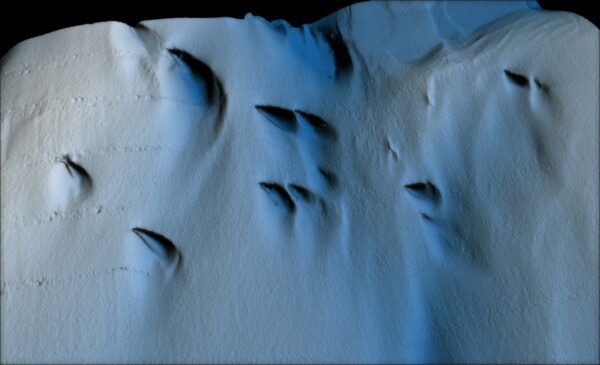The first detailed maps from the underside of the Doston Ice Shelf in Antarctica has revealed patterns that couldn’t be explained by existing models. On one side of the ice shelf, areas where the ice had melted were teardrop shaped whilst the other side, however, resembled landscapes on ice.
Underside of the ice shelf. Image by Filip Stedt/University of Gothenburg.
A study co-authored by Wåhlin and published in the journal Science Advances documents how the team developed and deployed the autonomous underwater vehicle that travelled more than 1,000 kilometres back and forth under the Doston Ice Shelf over the course of 27 days in 2022. The study was conducted as part of a project monitoring how atmospheric and oceanic processes impact ice shelves.
“When we saw the first teardrop, we thought ‘Oh, that’s a really funny shape,’ but then we saw more and more and they were everywhere in the western side,” Wåhlin, an oceanographer and professor at the University of Gothenburg in Sweden, told Mongabay in a video interview. On the eastern side, Wåhlin said it was much more dramatic, with “thick shapes carved into the ice that looked a little bit like the Grand Canyon where the water had eaten away into the ice.”
While it requires further research, the team has hypothesized that the teardrop-like erosions in the ice shelf — ranging from 20-300 meters (66-990 feet) in length — are shaped by fast ocean currents that flow near the ice, as well as by the Earth’s rotation. Wåhlin said they would need more data and better computer models and laboratory experiments to figure out the exact cause of these patterns.
Earlier this year, the researcher deployed the underwater vehicle again to gather more data on the ice shelf. However, during the process, the vehicle disappeared under the ice, underscoring the challenges of conducting research in the region.
To read the full article from Mongabay click here
To read the paper in Science Advances click here
